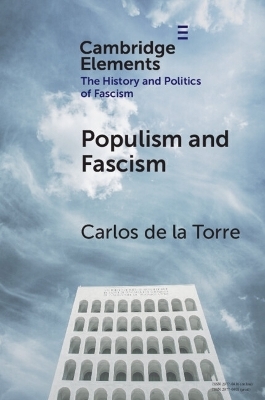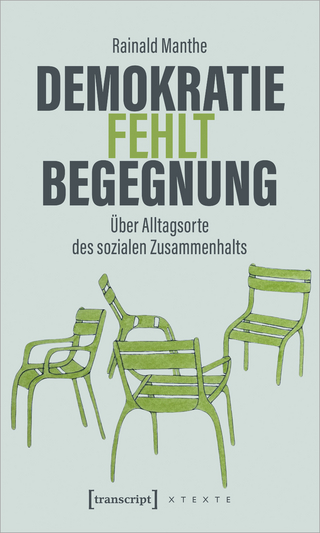
Populism and Fascism
Seiten
2025
Cambridge University Press (Verlag)
978-1-009-52898-6 (ISBN)
Cambridge University Press (Verlag)
978-1-009-52898-6 (ISBN)
- Noch nicht erschienen (ca. Januar 2025)
- Versandkostenfrei innerhalb Deutschlands
- Auch auf Rechnung
- Verfügbarkeit in der Filiale vor Ort prüfen
- Artikel merken
This Element compares the similarities and differences between populism and fascism, perhaps the most contested concepts in the social sciences. It is intended for a general audience, undergraduate students, and specialists. It uses simple terms to discuss theoretical, conceptual, and historical processes in a rigorous yet accessible way.
The elections of Donald Trump and Jair Bolsonaro, as well as the strengthening of the radical right globally, brought back debates of the similarities and differences between populism and fascism. This volume argues that fascism and populism are similar in so far that they constructed the people as one; understood leadership as embodiment; and performed politics of the extraordinary. They are different because there is a consensus that fascism occurred at a particular historical moment, and what came after was postfascism. There is not such an agreement to restrict populism to a historical moment. These isms also differ in the use of violence to deal with enemies, and on how they constructed their legitimacy using elections or abolishing democracy. Whereas fascism destroyed democracy and replaced elections with plebiscitary acclamation, populists promise to give power back to the people. Yet when in power the logic of populism leads to democratic erosion.
The elections of Donald Trump and Jair Bolsonaro, as well as the strengthening of the radical right globally, brought back debates of the similarities and differences between populism and fascism. This volume argues that fascism and populism are similar in so far that they constructed the people as one; understood leadership as embodiment; and performed politics of the extraordinary. They are different because there is a consensus that fascism occurred at a particular historical moment, and what came after was postfascism. There is not such an agreement to restrict populism to a historical moment. These isms also differ in the use of violence to deal with enemies, and on how they constructed their legitimacy using elections or abolishing democracy. Whereas fascism destroyed democracy and replaced elections with plebiscitary acclamation, populists promise to give power back to the people. Yet when in power the logic of populism leads to democratic erosion.
Preface; 1. Introduction: fascism or populism?; 2. Defining and explaining fascism and populism; 3. Similarities; 4. Differences; 5. Fascism, Populism, and Democracy; Conclusions; References.
| Erscheint lt. Verlag | 31.1.2025 |
|---|---|
| Reihe/Serie | Elements in the History and Politics of Fascism |
| Zusatzinfo | Worked examples or Exercises |
| Verlagsort | Cambridge |
| Sprache | englisch |
| Themenwelt | Geisteswissenschaften ► Geschichte |
| Sozialwissenschaften ► Politik / Verwaltung ► Politische Systeme | |
| Sozialwissenschaften ► Politik / Verwaltung ► Politische Theorie | |
| ISBN-10 | 1-009-52898-X / 100952898X |
| ISBN-13 | 978-1-009-52898-6 / 9781009528986 |
| Zustand | Neuware |
| Haben Sie eine Frage zum Produkt? |
Mehr entdecken
aus dem Bereich
aus dem Bereich
über Alltagsorte des sozialen Zusammenhalts
Buch | Softcover (2024)
transcript (Verlag)
24,00 €


